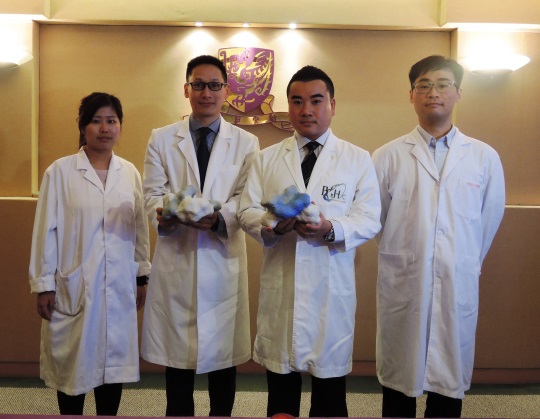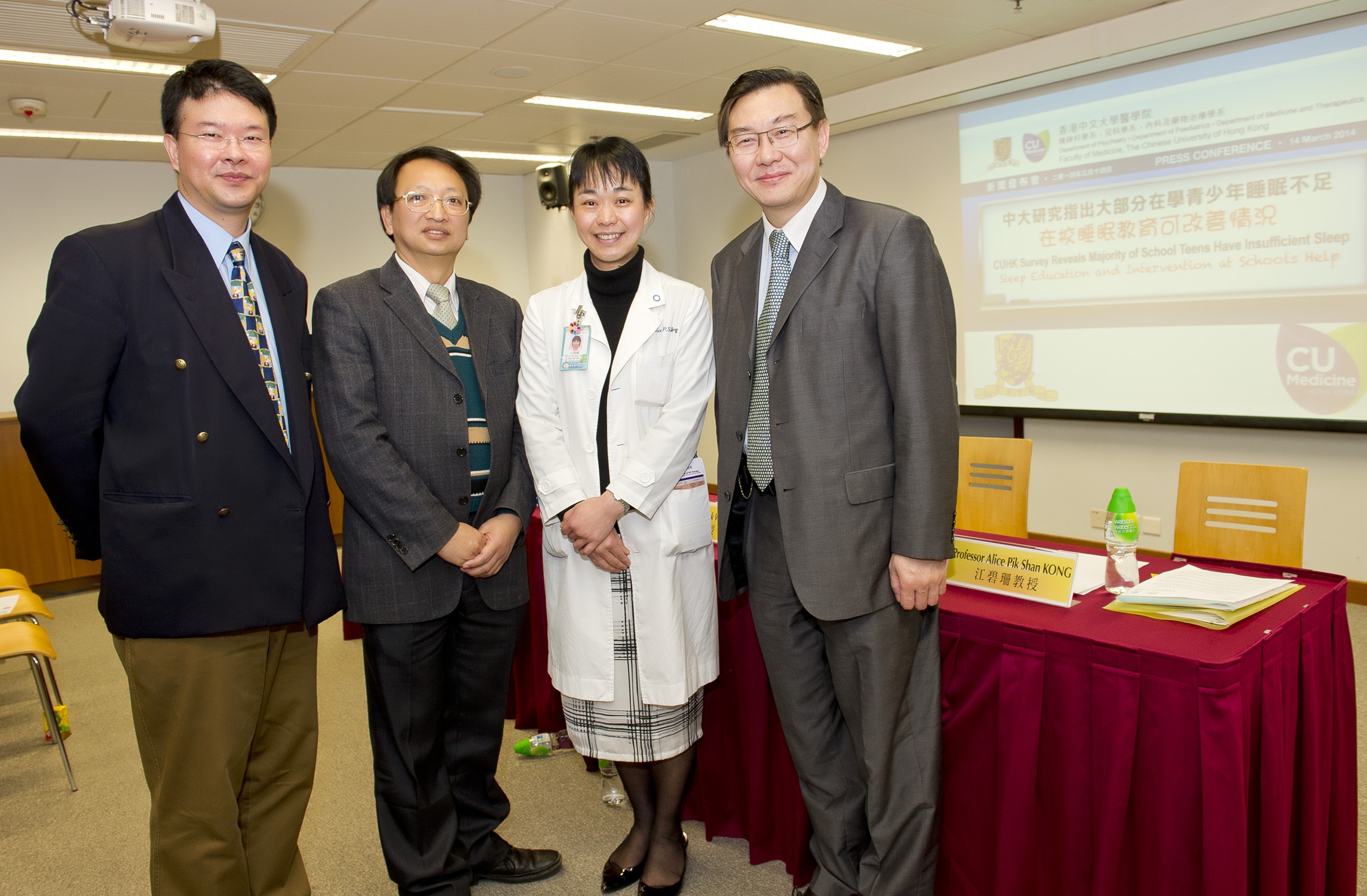CUHK Inter-disciplinary Research Team Finds Novel Drug Candidate for Rare Neurological Diseases
Since 1998, Prof. H.Y. Edwin Chan from The Chinese University of Hong Kong (CUHK) School of Life Sciences has studied a group of rare neurological disorders and developed therapeutic interventions against these diseases. Prof. Chan’s team has discovered a drug candidate P3, a 13-amino acid peptide, which can neutralize toxic RNA and rescue neurodegeneration. A United States patent application protecting this technology has been allowed by the US Patent and Trademark Office. P3 has the potential to be developed into therapeutic usage giving hope to individuals who suffer from rare neuronal diseases. Prof. Chan’s research findings have been published online in Disease Models & Mechanisms, a top SCI original research journal in pathology.
February 29 is Rare Disease Day. Its major objective is to raise awareness of rare diseases around the globe. Prof. Chan is advisor to the Hong Kong Alliance for Rare Diseases and chairs the Scientific and Medical Advisory Committee of the Hong Kong Spinocerebellar Ataxia Association, both of which are dedicated to promoting rare disease awareness in the community. Prof. Chan and his team study a group of rare neurological disorders collectively termed as polyglutamine (polyQ) diseases, which include Huntington’s Disease (HD) and several types of spinocerebellar ataxias (SCAs). HD, also known as Huntington chorea, causes deterioration of nerve cells in the brain, resulting in movement, cognitive and psychiatric disorders. SCAs cause progressive death of nerve cells in the cerebellum of the human brain, leading to failure of muscle control in the arms and legs, lack of balance and coordination of gait and slurred speech. In general, polyQ disease patients will gradually lose the fine motor functions of their bodies and have difficulty maintaining balance or coordinating daily movements. To date, polyQ diseases remain incurable. In 2012, Prof. Chan and his team reported that toxic RNA triggers nucleolar stress in polyQ diseases. They have shown that toxic CAG trinucleotide RNA molecules in cells disrupt ribosome function in both experimental models and patient samples. All cells, including nerve cells in the brain, rely on the proper functioning of important biomolecules, ‘ribosomes’, to sustain life. After four years of vigorous testing, Prof. Chan and his team have discovered a drug candidate P3 that can potently suppress toxic RNA-induced nucleolar stress and mitigate neurodegeneration. P3 is a synthetic 13-amino acid peptide modified from the nucleolin protein. It is capable of directly interacting with and neutralizing the toxic RNA in polyQ diseases. The therapeutic effect of P3 was demonstrated in cell and animal disease models, as well as in patient cells. This work was supported by CUHK; General Research Fund, ANR/RGC Joint Research Scheme & Collaborative Research Fund of the Research Grants Council; Health and Medical Research Fund of the Food and Health Bureau; Chow Tai Fook Charity Foundation; and Hong Kong Spinocerebellar Ataxia Association.
Prof. Chan said, ‘After we observed the overexpression nucleolin could suppress the cytotoxic effect of CAG RNA molecules in 2012, I took the initiative to invite experts from different disciplines, including a structural biologist, a peptide engineer, a material scientist and a pharmacologist, to form a multi-disciplinary research team. After four years of vigorous testing, our team successfully developed the peptidylic inhibitor P3. P3 is the first peptide-based inhibitor of its kind that is capable of neutralizing toxic RNA. We hope P3 can further be developed into therapeutic usage and bring hope to the sufferers of polyQ disorders at the bed-side’. Prof. Chan established an intercontinental research collaboration network on SCAs and HD, and co-manages multi-disciplinary research programmes with his collaborators residing in Denmark, France, Italy, UK and US. In particular, Prof. Chan works closely with Prof. Knud J. Jensen (University of Copenhagen, Denmark), an expert in peptide engineering, to further improve the bioactivity and stability of P3. The P3 technology developed by Prof. Chan’s team also has translational potentials in other diseases which nucleolin or nucleolar stress take part in, such as Alzheimer’s Disease, amyotrophic lateral sclerosis, Parkinson’s Disease, cancer and viral infection. Prof. Chan’s team is currently seeking pharmaceutical collaboration partners to further improve the drug-likeness of P3. Based on the P3 technology, Prof. Chan’s team further developed an innovative combinatorial treatment prototype. Such an interventional approach allows the simultaneous targeting of both the toxic RNA and protein in polyQ diseases.
Rare Disease Day is a worldwide campaign first organized in 2008 with the aim of raising awareness amongst the general public and decision-makers of rare diseases and their impact on patients' lives. The popular Japanese drama A Litre of Tears, which describes the real-life struggles of a 15-year-old girl suffering from SCAs, has helped to raise awareness of the rare polyQ diseases in Hong Kong. The Hong Kong Spinocerebellar Ataxia Association was established in 2007 and the Hong Kong Alliance for Rare Diseases in 2015 to provide support to patients and their families and promote, in general, rare diseases awareness in our community.
|
|



















